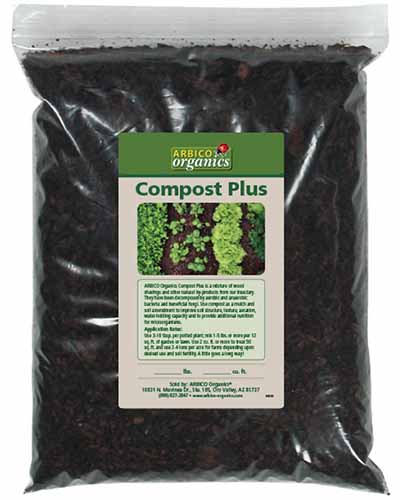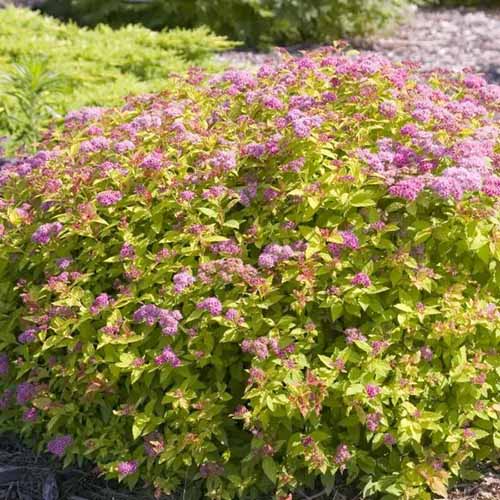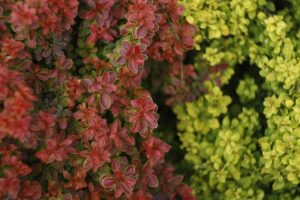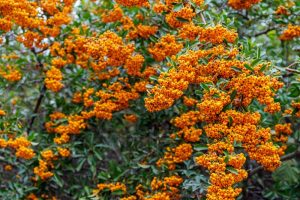Spiraea japonica ‘Walbuma’
Are you interested in adding a little magic to your garden?
While I can’t offer you a ride through the skies, I can introduce you to Magic Carpet spirea, aka Spiraea japonica ‘Walbuma,’ an ornamental shrub that promises an enchanting journey of its own.
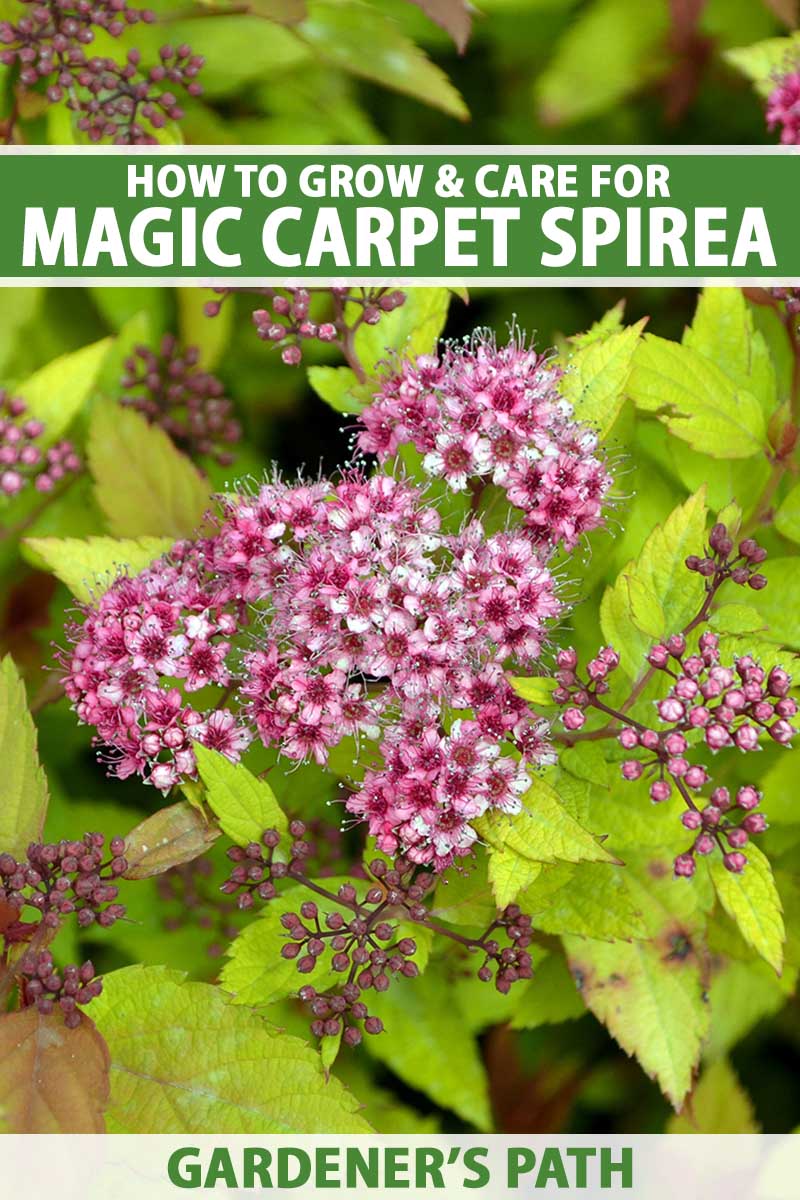
We link to vendors to help you find relevant products. If you buy from one of our links, we may earn a commission.
If you’re ready to enhance your landscape design, read on to learn more about this low maintenance Japanese spirea cultivar.
Here’s a preview of what I’ll be covering in this article:
What You’ll Learn
Now hop on my magic tapestry and let’s explore ‘Walbuma’ together!
What Is Magic Carpet Spirea?
Spiraea japonica ‘Walbuma’ is a Japanese spirea cultivar, commonly known as Magic Carpet spirea. As with all spireas, this delightful plant is a member of the Rosaceae family.
The Spiraea genus is a vast one, hosting at least 80 species and this dainty darling is a cultivar of the Japanese spirea. S. japonica.
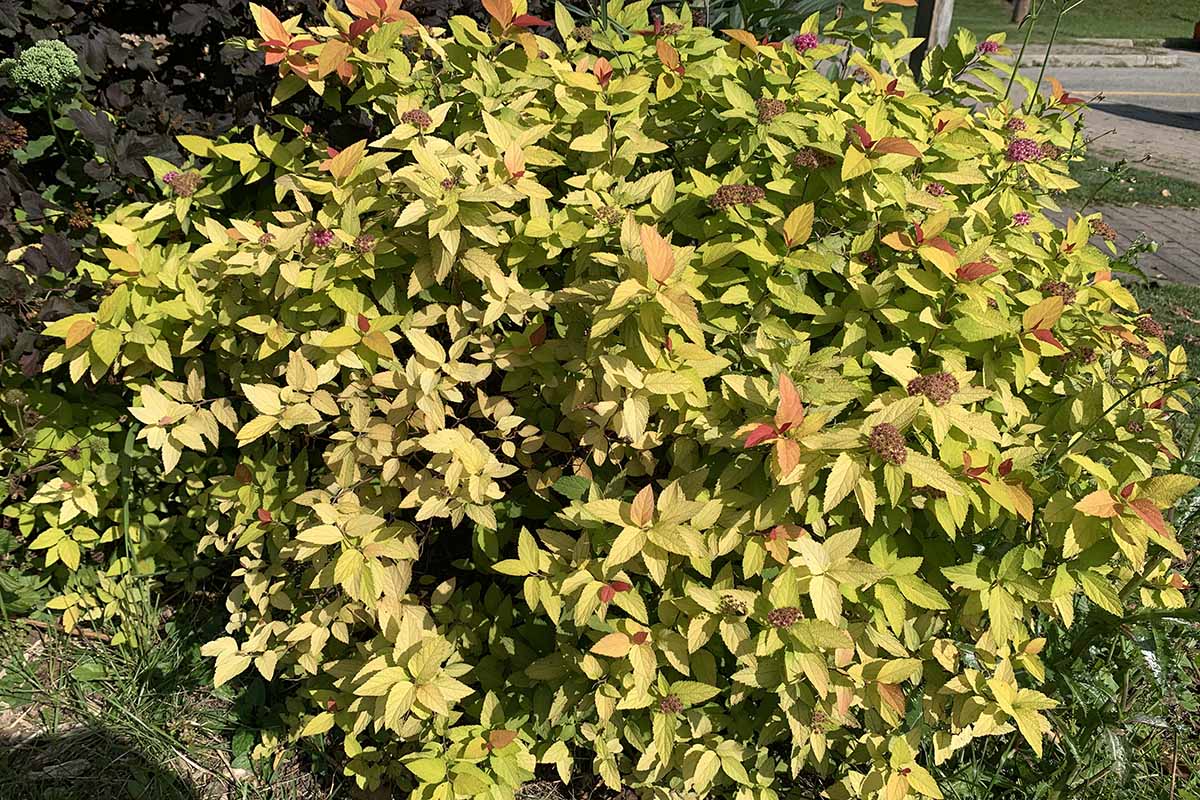
Magic Carpet spirea is quite the adaptable plant. It’s hardy in USDA Hardiness Zones 3 to 8, so it can survive in regions where temperatures can drop as low as -40°F.
What makes this plant stand out in the crowd of other Japanese spireas? Unlike some of its taller cousins, Magic Carpet spirea stays relatively low to the ground, topping out at just two feet tall at maturity.
Reaching a maximum spread of three feet, while maintaining a somewhat rounded shape, this plant is a good choice for borders or for growing as a colorful ground cover.

The color transformation of this plant is as magical as its name suggests. The ovate leaves emerge in spring with a fiery red tint.
As summer approaches, the foliage gradually shifts to a sunlit yellow, yet retains subtle hints of red, especially in the younger growth.
This vibrant foliage is complemented by its signature flower display – delicate deep pink flat-topped clusters, or corymbs, that begin to bloom in June, creating a delightful contrast.
Although the flowers fade after the initial bloom, this plant may produce random, intermittent repeat flowers. And, with deadheading and pruning, you can sometimes coax more blooms out of hiding.
Heading into fall, blooming comes to a halt and the foliage begins to change to a festive dark brown color with a tinge of reddish-orange. Come winter, the leaves fall, exposing thin wiry branches, perfect for collecting fallen snow and adding visual interest to the winter garden.
In essence, Magic Carpet spirea is a carefully cultivated masterpiece that brings a burst of color and life to gardens, setting itself apart from other plants in the garden with its unique growth habit, vibrant hues, and seasonal interest.
Before we delve into more detail, it is worth mentioning that S. japonica has been identified by the United States Department of Agriculture as an emerging invasive in some parts of the country.
S. japonica has escaped gardens and naturalized in areas of the eastern United States and up into Canada.
At the time of writing this article, it has not been banned in any states, but it is a wise idea to investigate your local rules and regulations before purchasing and planting this species.
While many S. japonica cultivars are sterile, Magic Carpet can be an aggressive self-seeder. It also produces suckers that contribute to its spread.
In Zone 5b, I have not personally experienced issues with the spread of my own Magic Carpet shrubs to date. So, for now, I plan to admire and enjoy my beautiful and forgiving, low-maintenance Magic Carpet spireas, and I hope you will too.
If you’re looking to add a touch of magic to your garden, this spirea might just be the spell you need!
Cultivation and History
The Magic Carpet spirea is the result of a meticulous breeding and selection process.
This plant breeding program at the Walberton Nursery in the UK, was led by chemist and plant breeder, David R. Tristram, and involved several thousand plants.
The process started with self-pollinated seeds from S. japonica ‘Goldflame.’ The best plants from the first batch were then chosen and self-pollinated again. This cycle repeated, and by the third generation, the cultivar ‘Walbuma’ was achieved.
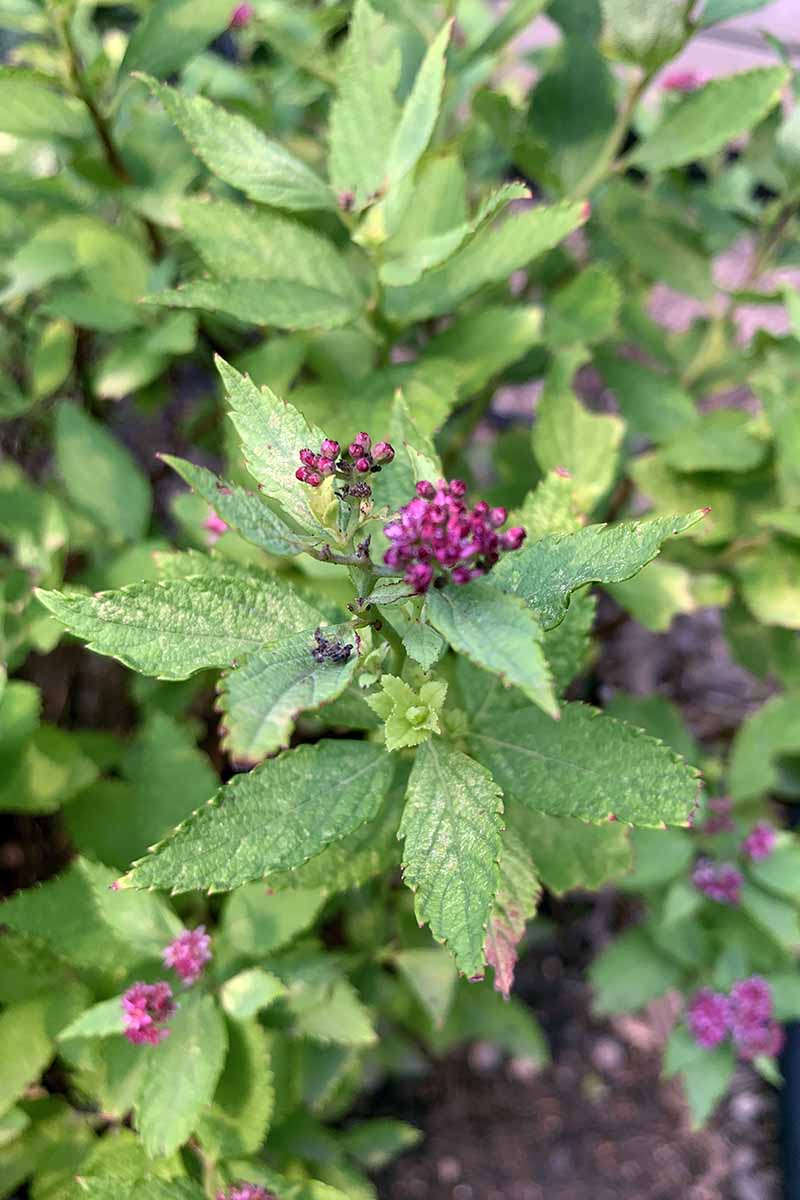
So, the Magic Carpet spirea is not just a product of the wonders of nature, but of carefully managed science. As with many botanical breeding achievements, it’s another testament to the dedication and expertise of its breeder and the wonders of botany.
The marketing name, Magic Carpet, aptly captures the vibrant and enchanting characteristics of the plant. The name evokes images of a colorful, magical journey, much like the flying carpet from tales of Aladdin.
Given the plant’s bright colors and its ability to transform landscapes, the name seems fitting, suggesting that this plant can whisk gardeners away on a horticultural adventure.
And I’ll admit – it was this name that first captured my attention when I purchased it. I mean who could resist?
Now let’s take a look at propagating this shrub ourselves, shall we?
Magic Carpet Spirea Propagation
‘Walbuma’ can be propagated through various methods. It is possible to start from seed, but saved seeds will not grow true to the parent plant, so let’s explore other options.
In spring, you can take softwood cuttings from new growth. As summer progresses, semi-ripe cuttings taken from where the shoot base becomes woody but the tip remains soft, are preferred.
Come winter, when the plant is dormant, hardwood cuttings from mature stems can be used.
A technique called layering is another option. To do this, you simply bend a flexible branch from your mature shrub down toward the soil, ensuring it makes good contact with the ground.
Use a stake to hold the branch in place, make sure it’s kept watered, and soon it will begin to form roots. Once it’s established, clip it free from the parent plant, and say hello to your new baby!
To learn more about propagating spirea from cuttings or layering, visit our guide.
It’s possible to divide a mature spirea. I’ve done it, but I’ve lost a few shrubs this way. For me, gardening is about learning and pushing boundaries, so with a dozen or more of a particular plant, sometimes I try things just to test its limits.
You can try it too but remember that it’s risky and not the most favored technique as mature spireas possess a thick root system, making the division a tad challenging.
You can learn more about dividing perennials in our guide.
Among the various propagation methods, taking cuttings is the easiest for spireas.
The fastest and easiest way to get your very own new Magic Carpet spirea is to purchase a container-grown or bare root plant from a nursery or garden center.
Whether you’ve obtained your new plant from cuttings, layering, or as a nursery start, the next part of the process is giving that plant a new home. Let’s look at the steps for transplanting.
Transplanting
Transplanting ‘Walbuma’ is a breeze. Plan to transplant these new shrubs in either spring or fall.
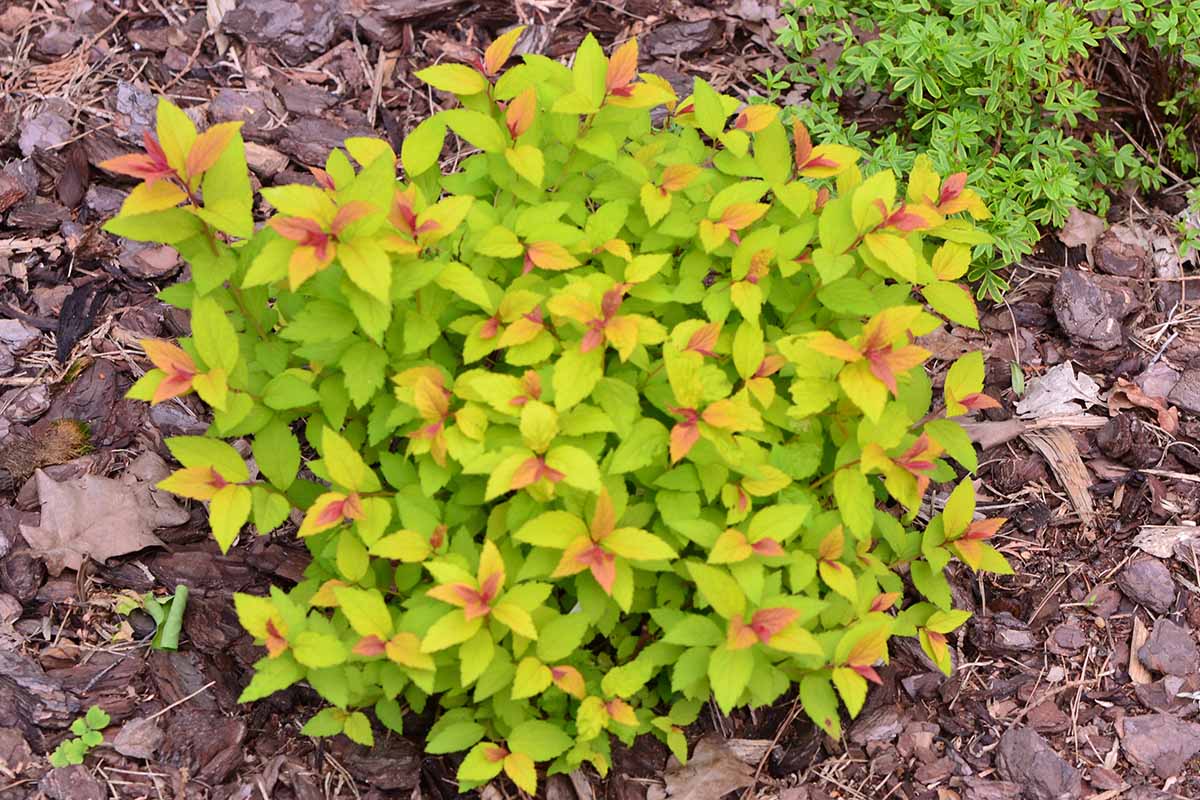
Start by digging a hole in the ground, ensuring it’s as deep as the shrub’s root system and roughly double the width.
While these spirited shrubs can brave less-than-ideal soil scenarios, why not roll out the red carpet for them? Take this opportunity to improve the soil so your new shrub has a healthy environment to put on its best show. Add a scoop of aged manure or compost into your planting hole.
If you’re searching for a quality compost product check out Compost Plus, available from Arbico Organics. You can choose from a variety of package sizes to suit your application.
If you’re transplanting a container-grown spirea, gently ease the plant out of the pot and give its roots a once-over. Untangle any tightly wound roots and snip off any that seem a bit off-color or frayed.
For bare root plants, unwrap the roots then inspect and trim any damaged pieces. Make a small mound of soil in the bottom of your planting hole and spread the roots over the top of it.
Nestle your spirea into its new home, ensuring the top of the root ball is level with the neighboring earth.
Fill in the hole, tamping it softly as you go to keep any sneaky air gaps at bay.
With your spirea snugly tucked in, drench the new planting with water to force out any remaining air pockets and help the soil cozy up to the roots.
The last step I recommend is adding a one- to two-inch layer of organic mulch.
This helps to protect vulnerable roots, especially with new plants as they work to become established. Mulching helps to retain moisture within the soil and slow evaporation.
How to Grow Magic Carpet Spirea
Now that you know how to plant this beauty, let’s give it a charmed life. Here’s everything you need to know to keep it healthy and looking great.
Magic Carpet thrives in locations that receive full sun, but it’s also tolerant of partial shade. This adaptability makes it a versatile choice for various garden spots. Aim to space these shrubs three to six feet apart to allow ample room to spread.
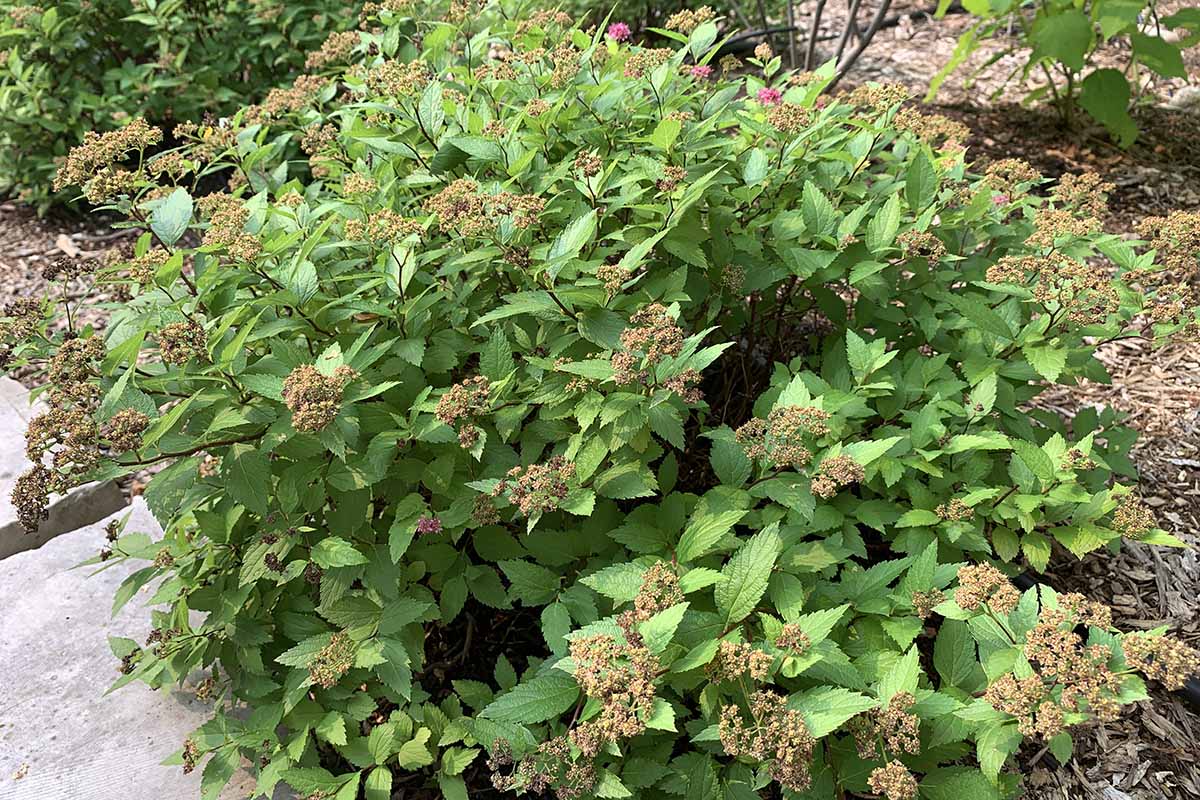
As I mentioned, it’s hardy in Zones 3 to 8, making it suitable for a wide range of North American gardens.
Like other types of spirea, these shrubs are known for their adaptability. But they still prefer well-drained soil. Leaving your shrub to sit in waterlogged conditions will encourage less than magical results.
To produce the healthiest foliage and flowers, these shrubs prefer moist, well-draining, loamy soil with a pH level of 6.5 to 7.5. But whether you have loam, sand, clay, or chalky soil, this plant can manage.
This shrub isn’t overly thirsty. Regular watering, in the absence of rain, during the first year of growth is crucial. Once established, it can handle occasional droughts, but it’s always a good idea to keep the soil consistently moist, especially during dry spells.
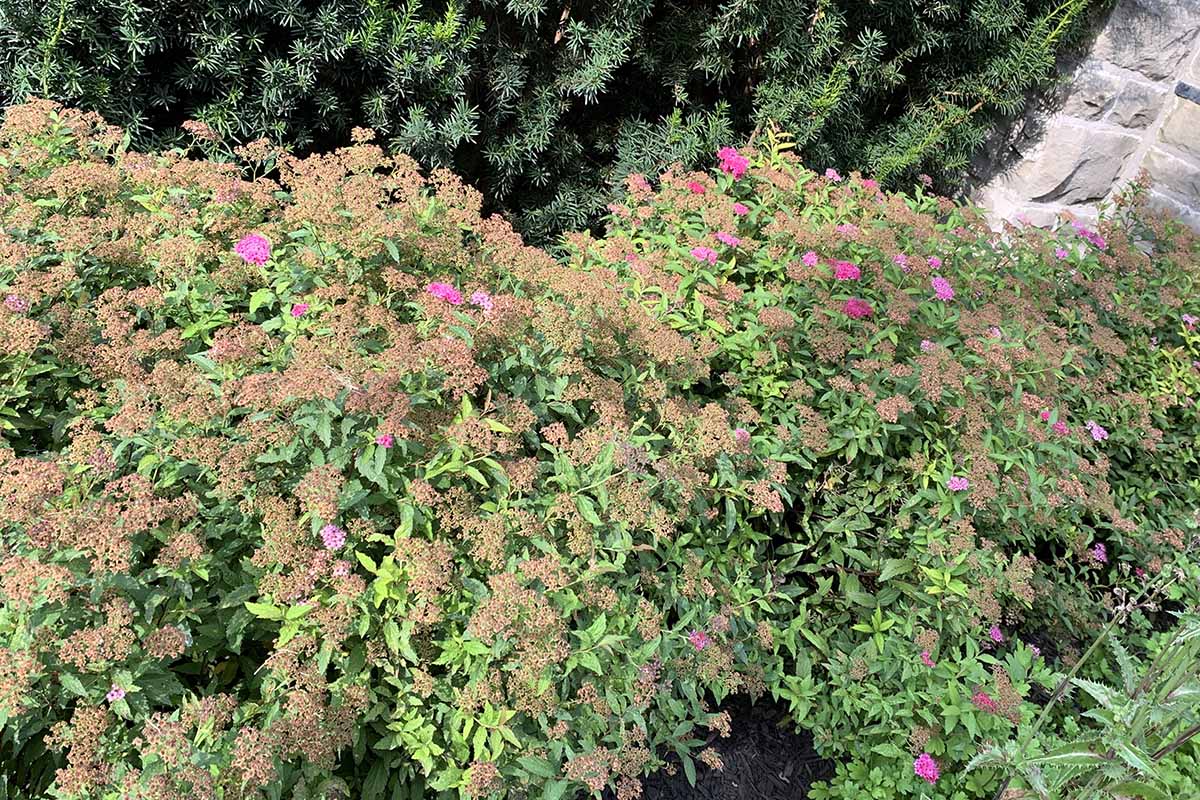
You can easily check the moisture by poking a finger into the soil around the root zone of your shrub. If you feel moisture within the top two inches of the soil you can skip watering and check again in a few days.
If the soil is dry, water deeply at the ground level near the base of the plant.
If you’re blessed with some organic matter like well-rotted manure, mixing a scoop into the top two inches of soil around the base of the plant in spring can give it an added boost to produce more abundant blooms. But even without it, the spirea will still put on a good show.
Alternatively, an annual application of a balanced, slow-release fertilizer in early spring can help it start the season with vigor.
If you’ve added organic matter to the soil, you might not need to fertilize as often. Always follow the manufacturer’s instructions when applying any fertilizer to avoid overfeeding.
With these guidelines in mind, your Magic Carpet spirea is set to dazzle and thrive in your garden!
Growing Tips
- Plant in well-draining soil.
- Position new plantings in full sun to part shade.
- Water consistently and avoid overwatering.
Pruning and Maintenance
Pruning is an essential aspect of maintaining the vibrant appearance and health of ‘Walbuma.’
One of the delightful characteristics of this spirea is its ability to bloom more than once in a season.
To encourage a second flush of blooms, consider a light pruning, or deadheading of flowers, right after the first blooms are spent. With this shrub, this deadheading and pruning can be accomplished at the same time by shearing the whole shrub with long hedge trimmers.
To do this, carefully shear off the outer one to three inches of foliage. This not only rejuvenates the plant but also encourages more abundant new blossoms to grace your garden later in the season.
While light pruning is beneficial for promoting blooms, there are times when a more substantial trim might be in order.
If your spirea starts to look a bit overgrown or loses its compact shape with a few branches growing taller or more lopsided than the others, don’t hesitate to give it a more thorough trim.
The best time for this more significant pruning is in late winter or very early spring before flower buds form.
When undertaking this task, always use sharp pruning shears to make clean cuts. Remove any dead or damaged branches first, cutting as close to the base of the plant as possible to keep a tidy, compact, and mounded form.
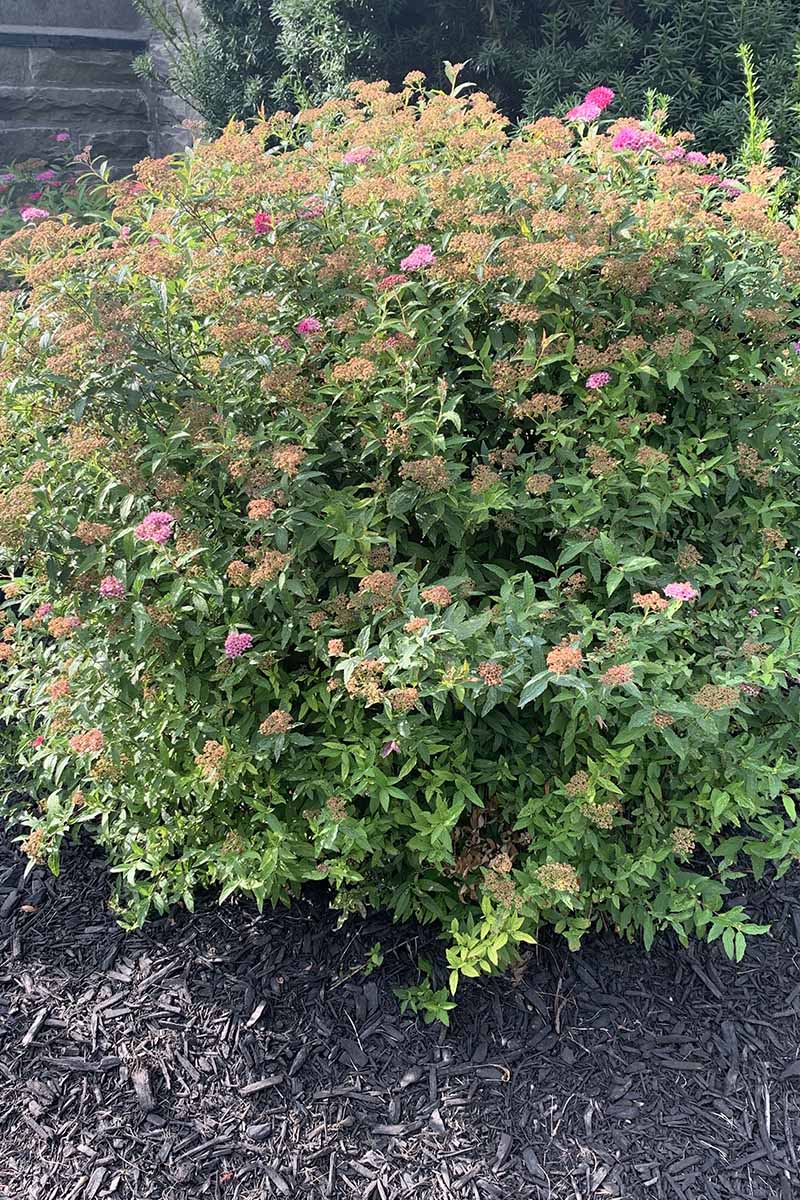
Japanese spireas in general are resilient, so if your shrub has grown completely out of control, remember that even if you cut back quite a bit, it should bounce back with vigor.
You can safely take this shrub down by one third of its size in late winter or early spring before flower buds form, and it will quickly fill out the same season with new growth and flowers.
If your bush has grown completely out of control and becomes unruly, it can be cut closer to the ground. This will completely rejuvenate the plant, but it will also leave an empty space in your landscape design as it fills back in, which could take two to three years.
To learn more, read our guide to pruning spirea.
Another thing about maintaining your new shrub: if you notice weeds creeping into your garden bed, yank those undesirable plants out – at least from the immediate area of your shrub and other plants. Weeds compete for vital moisture and nutrients your plants need to survive.
To round out maintenance topics, let’s review mulching and winter care for ‘Walbuma.’ If you followed the transplanting steps above, you may already have applied a layer of mulch. But let’s explore the purpose for this a little further.
Mulching serves multiple purposes. It not only helps retain soil moisture but also keeps pesky weeds at bay. By adding a layer of mulch around the base of your spirea, you’re also providing a protective barrier that shields the plant’s roots from extreme temperature fluctuations.
This is especially beneficial during those scorching summer days or chilly winter nights. When mulching, opt for organic materials like wood chips or bark, spreading them evenly around the plant but ensuring they don’t touch the stem to prevent rot.
While Magic Carpet spirea is hardy and can withstand the cold temperatures of Zones 3 to 8, a little extra care during winter can go a long way.
Take a look at our guide for more details about caring for your spirea during the winter.
That’s it for maintenance! Like I said, this ornamental is a piece of cake to care for.
Where to Buy
Spellbound and ready to take a ride on this enchanted tapestry? You can find this popular cultivar at your local nursery, greenhouse, or gardening center.
If you prefer the convenience of online shopping, visit Nature Hills Nursery to find one- to two-foot bare roots or plants in #3 containers.
Either of these options saves you from navigating the traffic and wrestling bushes into your vehicle.
Managing Pests and Disease
Japanese spireas, in general, are pretty tough and unbothered by pests and disease, so it’s no surprise that Magic Carpet is too.
Remember, a healthy plant is often the best defense against potential diseases. By maintaining optimal growing conditions and being vigilant, you can ensure your ‘Walbuma’ remains a vibrant and thriving addition to your garden.
Herbivores usually steer clear of these shrubs, but if they’re particularly hungry, they might take a nibble from the spirea salad bar. If you notice an unusual amount of damage from deer or rabbits, consider protecting your bushes with some deer fencing or chicken wire.
When it comes to pests, keep a look out for aphids, leafrollers, and scale insects. I always recommend a holistic approach, using natural and biological control methods first, as opposed to chemicals, to battle insect infestations.
Try insecticidal soap, neem oil, or microbial insecticides like Bacillus thuringiensis (Bt). You can introduce natural predators like ladybugs, tachinid flies, and lacewing larvae.
Manual removal and pruning of any affected foliage are also oftentimes effective.
In my own gardens, I have attracted and encouraged the presence of predatory insects to control unwanted insect pests by planting pollinator-friendly species.
Like other Japanese spireas, Magic Carpet can occasionally be susceptible to diseases such as gray mold, fire blight, powdery mildew, root rot, and verticillium wilt. These ailments manifest in various ways, including wilting and discoloration of the foliage.
To ensure the health and vitality of your spirea, it’s essential to adopt preventative measures. Regularly inspect your plant for early signs of these insects and diseases.
Encourage adequate air circulation with proper spacing and avoid overhead watering, which can encourage disease.
Take a look at our Japanese spirea growing guide for more detailed information about these pests and diseases, and how to control them.
Best Uses for Magic Carpet Spirea
Magic Carpet spirea is a versatile landscape plant.
With its vibrant foliage that transitions from fiery red in spring to a golden hue in summer, topped with clusters of deep pink flowers, it’s a three-season visual treat for any garden.
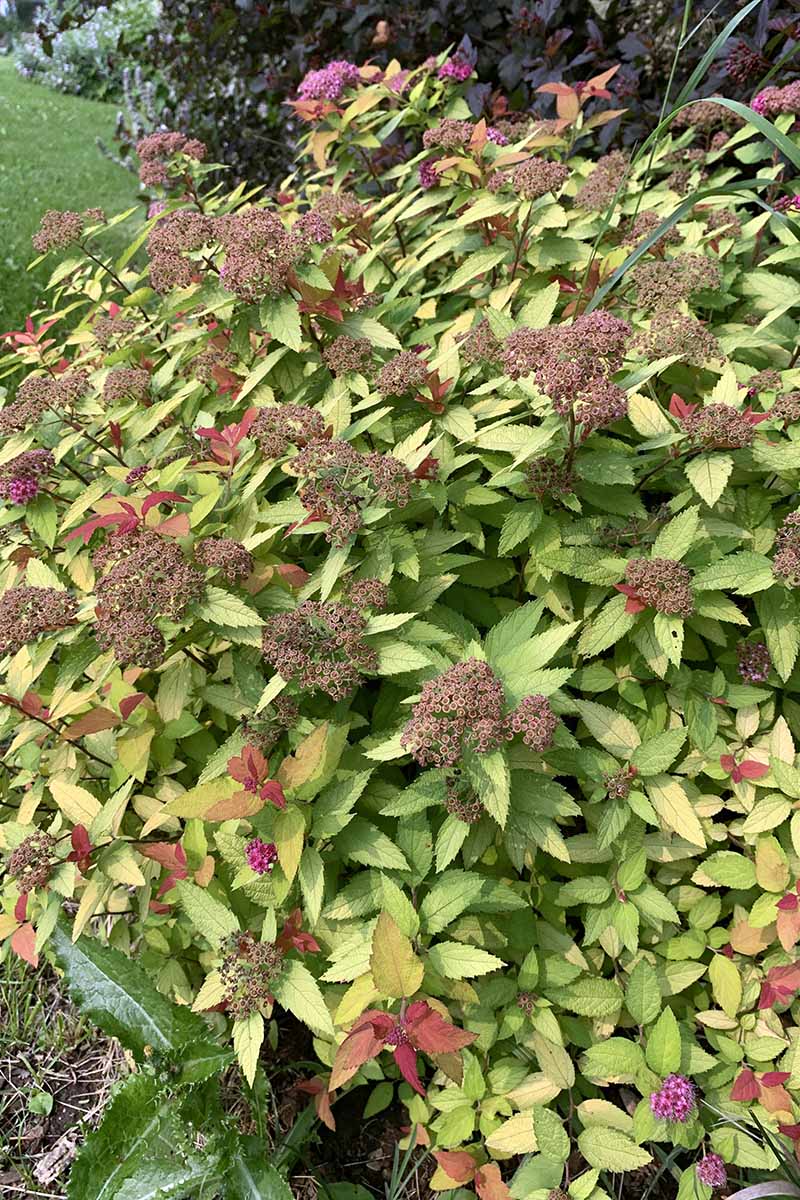
Let’s not forget about the value of its winter interest! The bare, wiry branches can capture snowfall making for a charming cold-weather garden display.
Ideally suited for mixed borders, this low-growing deciduous shrub thrives in full sun or light shade, making it a perfect choice for patios, city courtyards, and cottage gardens.
Its compact and bushy growth habit allows it to fit seamlessly into flower beds, adding a splash of color and texture. Moreover, it’s not just about aesthetics; this spirea cultivar is tolerant of a variety of growing conditions, making it easy to cultivate and care for.
In whatever application you’re planning for, Magic Carpet incorporates a delightful blend of beauty and resilience, ensuring your garden remains lively and colorful throughout the seasons.
Quick Reference Growing Guide
| Plant Type: | Deciduous perennial flowering shrub | Flower / Foliage Color: | Pink / green, gold, red |
| Native to: | Cultivated variety | Tolerance: | Air pollution, deer, drought, erosion, light shade, poor soil |
| Hardiness (USDA Zone): | 3-8 | Soil Type: | Loamy |
| Bloom Time/Season: | Spring, summer | Soil pH: | 6.0-7.0 |
| Exposure: | Full sun to part shade | Soil Drainage: | Well-draining |
| Spacing: | 3-6 feet | Attracts: | Bees, butterflies |
| Planting Depth: | Same depth as container (transplants) | Companion Planting: | Barberry, coral bells, grasses, hydrangea, rhododendron, sedum, weigela |
| Height: | 1-2 feet | Uses: | Border, foundation planting, ground cover, hedge, mass planting, rock garden |
| Spread: | 2-3 feet | Order: | Rosales |
| Growth Rate; | Fast | Family: | Rosaceae |
| Water Needs: | Low | Genus: | Spiraea |
| Maintenance: | Low | Species: | Japonica |
| Pests & Diseases: | Aphids, leaf rollers, scale; gray mold, fire blight, powdery mildew, root rot, verticillium wilt | Cultivar: | Walbuma aka Magic Carpet |
Every Gardener’s Dream
Our journey with the Magic Carpet spirea has come to a close. We’ve traveled deep into the enchanting world of this lively shrub, from its origins to its vivid and versatile presence in our gardens.
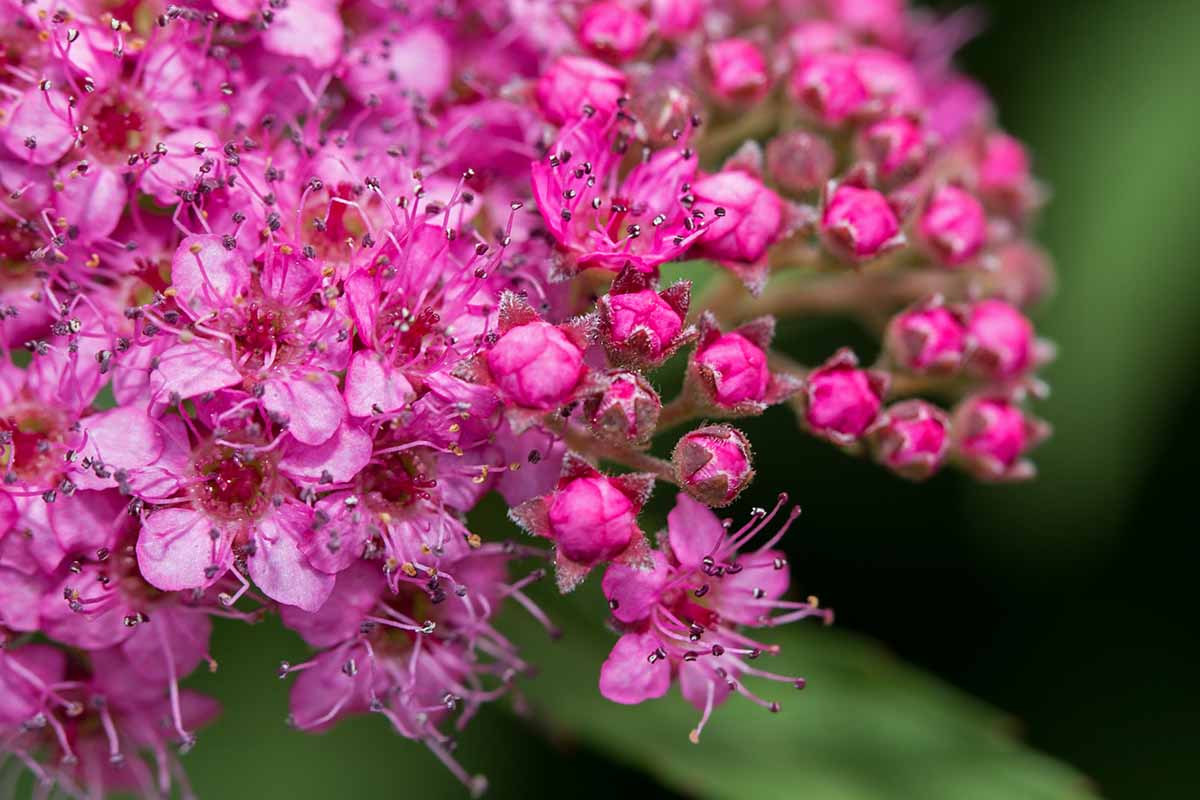
Just as a magic carpet promises adventure and freedom, the Magic Carpet spirea offers a world of versatility and possibilities for your landscape. This is every gardener’s dream, isn’t it?
As you step off this metaphorical carpet, whether you’re a seasoned gardener or just starting out, remember this cultivar as a good candidate for your garden design.
Does your garden have a story to tell? I’d love to hear about the inspiration for your own design! Drop a comment below.
If you found this guide helpful and you’d like to learn more about spirea, check out these guides next:
